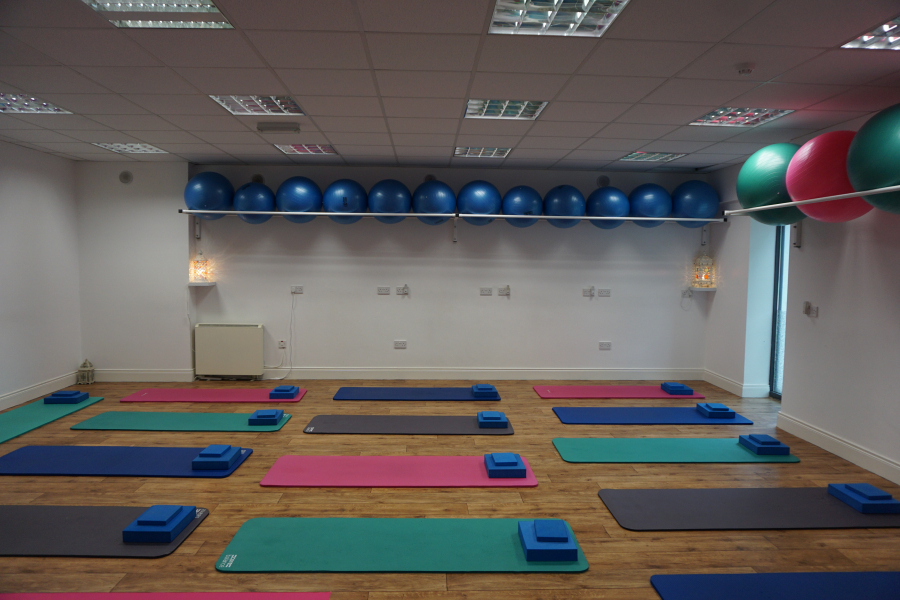Pilates as a form of exercise for individuals with osteoporosis
Osteoporosis is a systematic bone disease characterised by low bone mass, compromised bone strength and increased susceptibility to fractures, particularly around the wrist, hip and spine.
Exercise can help to increase bone density in children especially pre-puberty/puberty, when bones are growing. Exercise during and after the menopause can improve muscle tone and decrease bone resorption. When it comes to exercise an individual does it depends on the individuals age, ability, DXA scan results (bone density scan), risk of fracture and medical history.
Bone is dynamic tissue, like muscle, that strengthens in response to forces it has to resist. Gravity is one such force, and working against gravity is what we refer to when speaking of "weight-bearing exercise." The combination of compression and tension from gravity and from our muscles plays a major role in bone strengthening.
Although swimming and cycling are great forms of cardiovascular exercise and strengthening, they are both non-weight bearing and therefore have no effect on improving bone density or reducing resorption of bone.
Your bones need additional loading to prevent osteoporosis as well as the general bone loss that naturally occurs with age. This loading comes from weighted & resistance exercises and high impact exercises like walking, running, jumping and dancing. For example walking up and down a stairs 10 times is a third of an adult’s daily weight bearing. You need to move in new ways and to "surprise" the bone, as some researchers are now saying. We need to move in differing directions and at different speeds to encourage the bone to continue to strengthen.
Pilates can be an effective part of your regular exercise program when you have osteioporosis or osteopenia. However, not all exercises are appropriate for those with low bone density. A traditional program will have to be modified to keep your bones safe from the risk of fracture.
Those with osteoporosis might want to look for classes that are specifically geared to their condition. And of course, you should check with your healthcare provider before beginning any new exercise program.
What to consider when attending Pilates based exercises classes for osteoporotic individuals:
- Find a certified instructor who is catering for individuals with osteopenia or/and osteoporosis.
- What to avoid: It is important to avoid certain exercises those that involve spinal flexion (forward bending) and twisting motions as these movements compress your spine, overloading your vertebrae and putting weaker bones more at risk of fracture.
- Positive exercises: research has shown that extension (bending backwards) can reduce the load on the vertebrae while increasing the muscle strength around the spine and upper back muscles, which reduces the rounded shoulder posture and forward head tilt, characteristic of osteoporosis sufferers. Also performing exercises on all fours can increase strength around the wrist and lower arms to reduce the risk of fracture if a fall occurs.
- Reduce risk of falls: by strengthening the muscles around the hip, back and legs, in conjunction with balance and proprioceptive exercises you can reduce your risk of falls and therefore potential for fractures, so make sure kneeling and standing exercises are included in your Pilates class.
- Being mindful: during the classes you will need to focus on your posture & alignment during exercise, correct technique and breathing patterns. Developing this awareness of your body and how you move will have an effect when you are moving outside the studio, especially if functional movements are incorporated like sitting to standing (squats), stepping up and down and single leg balance exercises.
When you make the proper movement choices necessary to maintain healthy bones and avoid fracture, you can safely enjoy the plentiful benefits of Pilates. Of course you also need to remember exercise must be accompanied by other healthy lifestyle habits including proper nutrition to mineralize the bones.
References:
- Consensus development conference; diagnosis, prophylactics and treatment of osteoporosis. American journal of medicine. 94; 646-650.1993
- teven Fetherhuff, PMA-Certified Pilates Teacher™, is a Pilates instructor with the Rehabilitation Department at Hospital for Special Surgery’s Integrative Care Center. Topics: Featured, Orthopedics, Rehabilitation and Fitness http://hss.edu/onthemove/how-to-do-pilates-while-safely-managing-osteoporosis/#.VNVVcy6Mels (6th feb 2015)
- An Interview with Rebekah Rotstein http://pilates.about.com/od/specialbodies/a/Pilates-And-Exercise-For-Osteoporosis_2.htm (6th feb 2015)
- Osteoporosis guideline for health professionals, irish osteoporosis society.
